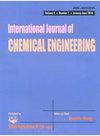Comprehensive Monitoring of Complex Industrial Processes with Multiple Characteristics
IF 2.4
4区 工程技术
Q3 ENGINEERING, CHEMICAL
引用次数: 0
Abstract
Traditional onefold data-driven methods for fault detection in complex process industrial systems with high-dimensional, linear, nonlinear, Gaussian, and non-Gaussian coexistence often have less than satisfactory monitoring performance because only a single distribution of process variables is considered. To address this problem, a hybrid fault detection model based on PCA-KPCA-ICA-KICA-BI (Bayesian inference) is proposed, taking into account the advantages of principal component analysis (PCA), kernel principal component analysis (KPCA), independent component analysis (ICA), and kernel independent component analysis (KICA) in terms of dimensionality reduction and feature extraction. Foremost, this paper proposed a nonlinear evaluation method and divided the feature variables into Gaussian linear blocks, Gaussian nonlinear blocks, non-Gaussian linear blocks, and non-Gaussian nonlinear blocks by using the Jarque–Bera (JB) test and nonlinear discrimination method. Each division was monitored by the PCA-KPCA-ICA-KICA model, and finally the Bayesian fusion strategy proposed in this study is used to synthesize the detection results for each block. The hybrid model helps in evaluating variable features and bettering detection performance. Ultimately, the superiority of this hybrid model was verified through the Tennessee Eastman (TE) process and the Continuous Stirred Tank Reactor (CSTR) process, and the fault monitoring results showed an average accuracy of 85.91% for this hybrid model.具有多种特征的复杂工业过程的综合监测
传统的单一数据驱动方法用于高维、线性、非线性、高斯和非高斯共存的复杂过程工业系统的故障检测,由于只考虑过程变量的单一分布,往往监测效果不理想。为了解决这一问题,结合主成分分析(PCA)、核主成分分析(KPCA)、独立成分分析(ICA)和核独立成分分析(KICA)在降维和特征提取方面的优势,提出了一种基于PCA-KPCA-ICA-KICA- bi(贝叶斯推理)的混合故障检测模型。首先,本文提出了一种非线性评价方法,利用Jarque-Bera (JB)检验和非线性判别法将特征变量划分为高斯线性块、高斯非线性块、非高斯线性块和非高斯非线性块。采用PCA-KPCA-ICA-KICA模型对每个块进行监测,最后采用本研究提出的贝叶斯融合策略对每个块的检测结果进行综合。混合模型有助于评估变量特征,提高检测性能。最终,通过田纳西州伊士曼(TE)过程和连续搅拌槽式反应器(CSTR)过程验证了该混合模型的优越性,故障监测结果表明,该混合模型的平均准确率为85.91%。
本文章由计算机程序翻译,如有差异,请以英文原文为准。
求助全文
约1分钟内获得全文
求助全文
来源期刊

International Journal of Chemical Engineering
Chemical Engineering-General Chemical Engineering
CiteScore
4.00
自引率
3.70%
发文量
95
审稿时长
14 weeks
期刊介绍:
International Journal of Chemical Engineering publishes papers on technologies for the production, processing, transportation, and use of chemicals on a large scale. Studies typically relate to processes within chemical and energy industries, especially for production of food, pharmaceuticals, fuels, and chemical feedstocks. Topics of investigation cover plant design and operation, process design and analysis, control and reaction engineering, as well as hazard mitigation and safety measures.
As well as original research, International Journal of Chemical Engineering also publishes focused review articles that examine the state of the art, identify emerging trends, and suggest future directions for developing fields.
 求助内容:
求助内容: 应助结果提醒方式:
应助结果提醒方式:


